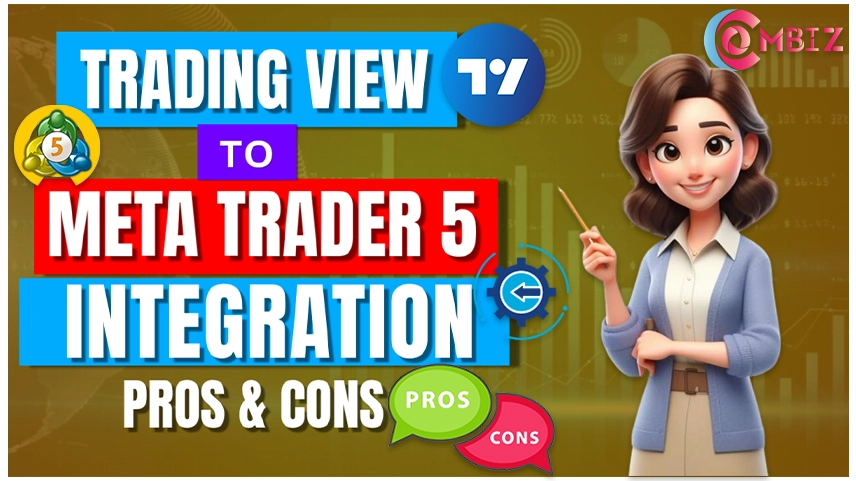
Are you thinking of connecting TradingView to MetaTrader 5 (MT5)? If so, you’re not alone. Today, many traders use TradingView for its powerful charting functionality and use MT5 for real-time trade execution. An integration between the two could bring better automation, speed, and convenience—but as with anything trading-related, there are pros and cons to be aware of.
In this blog, we’re going to outline the pros and cons of integrating TradingView with MetaTrader 5 by using tools such as MetaConnector and others. We will try to make this simple, easier to decipher, and beginner-friendly so you can decide if this is the right step for you.
TradingView to MT5 Integration
Before we get into some of the advantages and disadvantages of this process, let's first understand what it means.
TradingView to MT5 integration allows traders to send alerts, strategies, or signals created on TradingView directly onto the MetaTrader 5 platform. The alerts are usually through webhooks, and one of the tools, such as MetaConnector or bridge software, picks up these alerts and automatically places trades on MT5.
Contact Us for Inquiries
Pros
1. Powerful Charting with Real Execution
TradingView has some extraordinarily clean, fast, and flexible charting features. MT5 integration allows you to analyze your trades within TradingView and execute them directly from that platform without having to switch between platforms.
2. Automated Without Any Coding
There’s no need to program and create an actual algorithm with tools like MetaConnector, so you can automate trading from TradingView to MT5 without writing a single line of code. Simply create alerts in TradingView using Pine Script, and the bridge will execute it for you.
3. Saves Time and Delivers Faster Execution
The integration of TradingView to MT5 saves you time from having to manually place the order. When TradingView generates the signal, the bridge tool sends the order in real-time to MT5.
4. Ability to Have Access to Multiple Brokers
Since MetaTrader 5 supports many brokers from all over the globe, you can trade with your favorite broker while having the ability to do your analysis in TradingView.
5. Supports Advanced Strategies
TradingView allows you to automate more advanced indicators like RSI, moving averages, Supertrend, MACD, etc. Also, with a simple, concise piece of code, you can automate more complicated trading strategies by placing the respective strategy into Pine Script and telling TradingView to send the signal via webhook alerts to MT5, thus creating a hands-free, automated trade.
Cons
1. Not the easiest for beginners to set up
It's easy to say that no coding is involved; however, creating your alerts in TradingView and configuring webhook URLs can be somewhat of a technical issue if you are a first-time user.
2. Dependence on Third-Party Tools
You need reliable bridge or copier software like MetaConnector. If the tool fails or has downtime, your automation could stop working.
3. Latency Problems
Alerts are provided in real-time, but you may experience some delays at times due to network latency or slippage on the broker side.
4. No Native Integration
There is no native integration for MetaTrader 5 in TradingView, which means it always requires a third-party service, potentially at additional cost.
5. Alert Limitations
If you have been using the free TradingView plan, there are limitations to the number of alerts you can create, so you may need the paid plan to fully automate your strategies.
Check out the pricing details
Price
When should you use TradingView to MT5 integration?
- You already use TradingView for chart analysis and want real trades made in MetaTrader 5.
- You want to automate your strategies without hiring a developer or having to learn to code.
- You trade on brokers that use MetaTrader 5 as a platform.
- You want to minimize manual errors and/or save time on execution.
Conclusion
The TradingView to MetaTrader 5 integration is an interesting development for any trader wanting the best of both worlds—smart charting and good execution. There are risks and limitations to consider, but this will usually be outweighed if you are using the right tools and strategies.